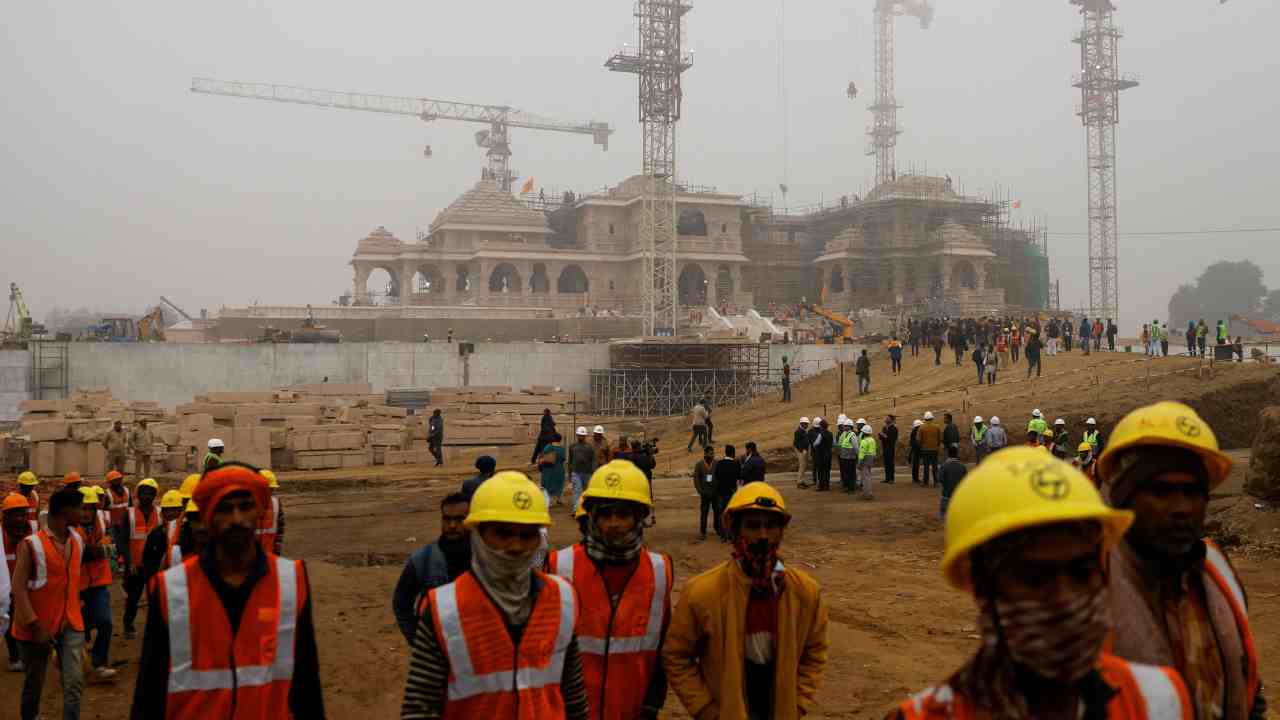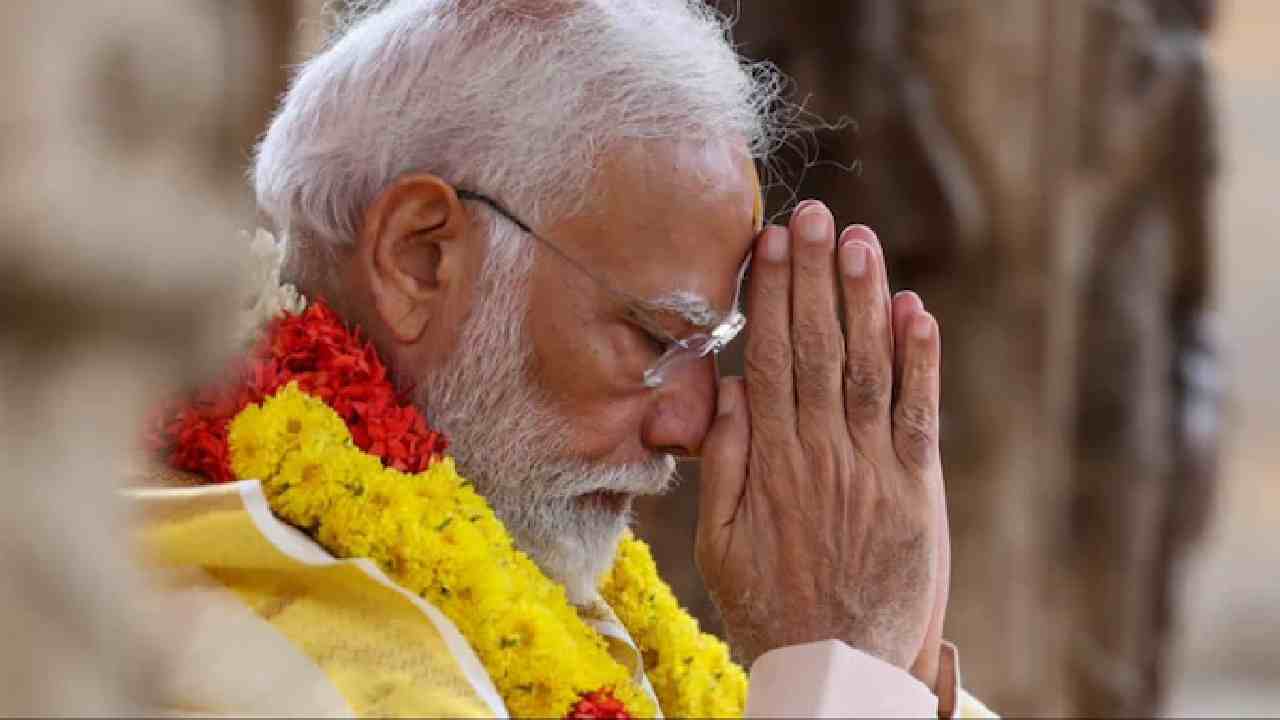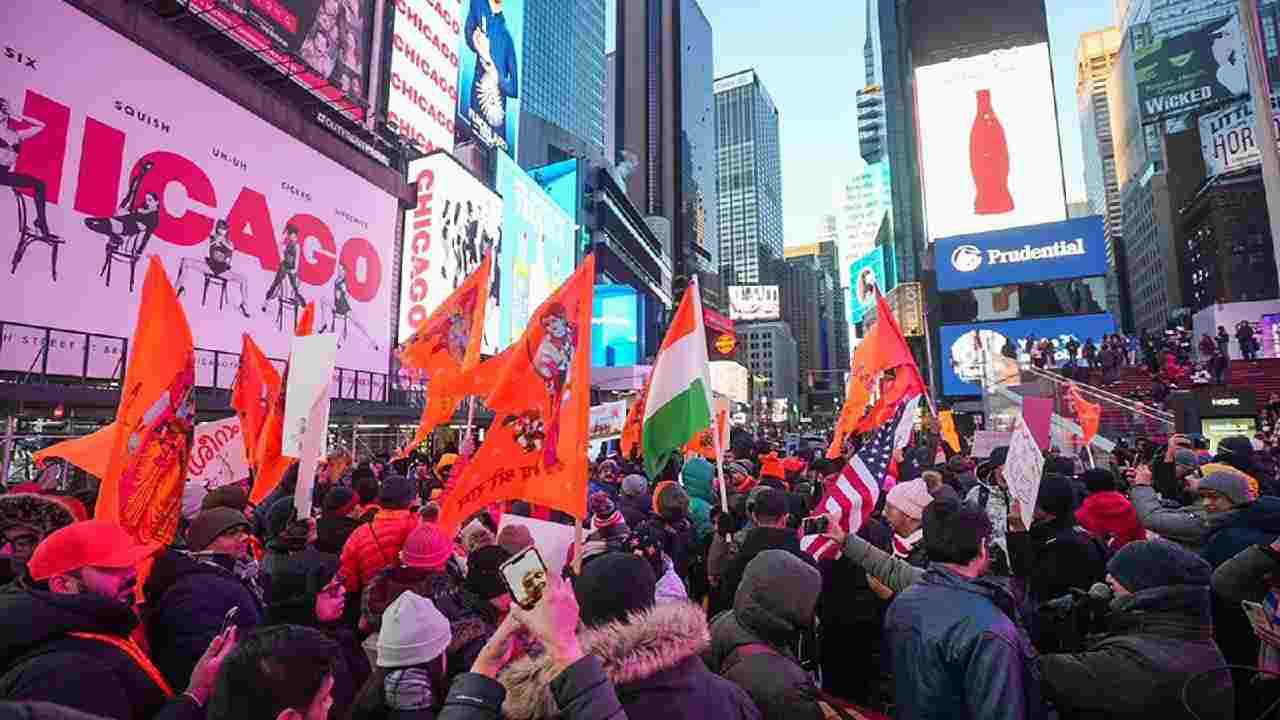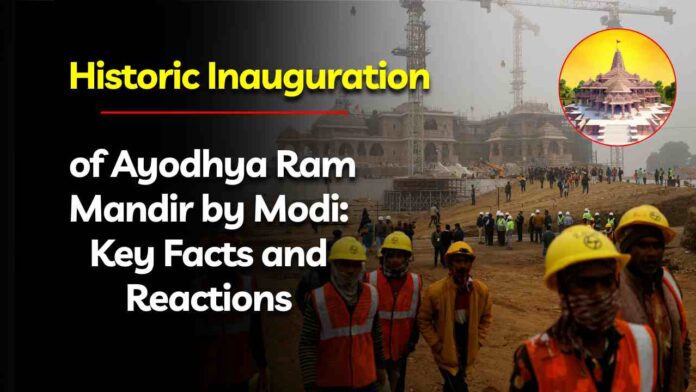The long-awaited inauguration of the Ayodhya Ram Mandir in India is set to take place, marking a significant milestone in the country’s religious and political landscape. Prime Minister Narendra Modi is at the forefront of the ceremonies, which have garnered global attention. Here’s a comprehensive overview of the event.
1. Construction and Funding: Ayodhya Ram Mandir

- Larsen and Toubro, an Indian engineering group, is spearheading the construction within a vast 70-acre complex.
- The estimated cost of the project is approximately 15 billion rupees ($180 million), with no government funding. Instead, donations totaling around 30 billion rupees ($361 million) have been collected for the temple complex.
2. Artistic Marvels and Interior Decor:
- Artists from across India have been selected to create artwork and murals showcasing the nation’s diversity.
- The temple’s interiors will be adorned with gold, emphasizing opulence and grandeur.
- Three sculptors crafted murals of Lord Ram, with a black stone sculpture weighing 150-200 kgs selected for the sanctum sanctorum.
3. Modi’s Spiritual Preparation:

- Ahead of the inauguration, Prime Minister Narendra Modi observed an 11-day ritual involving fasting and prayers, steeped in Hindu religious symbolism.
- Modi expressed that he sees himself as an instrument representing all of India during the consecration.
4. Political Significance:
- Narendra Modi’s association with Hindu religious ceremonies, despite India’s secular foundations, reflects a shift in the nation’s political landscape.
- Modi’s push for the Ram Mandir aligns with his Hindutva agenda, aiming to position India as a land for Hindus.
5. Global Celebrations:

- Devotees gathered in New York’s Times Square to celebrate the event, projecting images of Lord Ram and carrying saffron flags.
- Indian embassies worldwide screened the historic event, and 7,000 dignitaries, including politicians and celebrities, attended the consecration ceremony in Ayodhya.
6. Historical Background and Controversy:
- The temple’s construction site was once home to the Babri Masjid, a 16th-century mosque, leading to communal violence in 1992 when it was demolished.
- India’s Supreme Court granted Hindus permission to build the temple on the contested site in 2019, seen as a victory for Modi and his supporters.
7. Concerns Among Muslims:
- Ayodhya is home to about 500,000 Muslims, and some fear potential attacks on the day of the temple’s inauguration.
- Apprehension among Ayodhya’s Muslims stems from memories of the 1992 violence and concerns of deepening religious divisions.
8. Enthusiastic Devotees:
- Tens of thousands of Hindus flocked to Ayodhya, eager to witness the inauguration and catch a glimpse of the newly unveiled Ram idol.
- Despite the temple officially opening to the public on Tuesday, vast crowds are expected.
Conclusion: The inauguration of the Ayodhya Ram Mandir represents a convergence of religious fervor, political strategy, and global celebration. As India marks this historic event, it remains to be seen how it will impact the nation’s diverse social fabric and political landscape.
Also Read – Ayodhya Ram Mandir: How the World’s Largest Ram Temple Construction Movement Became Successful

